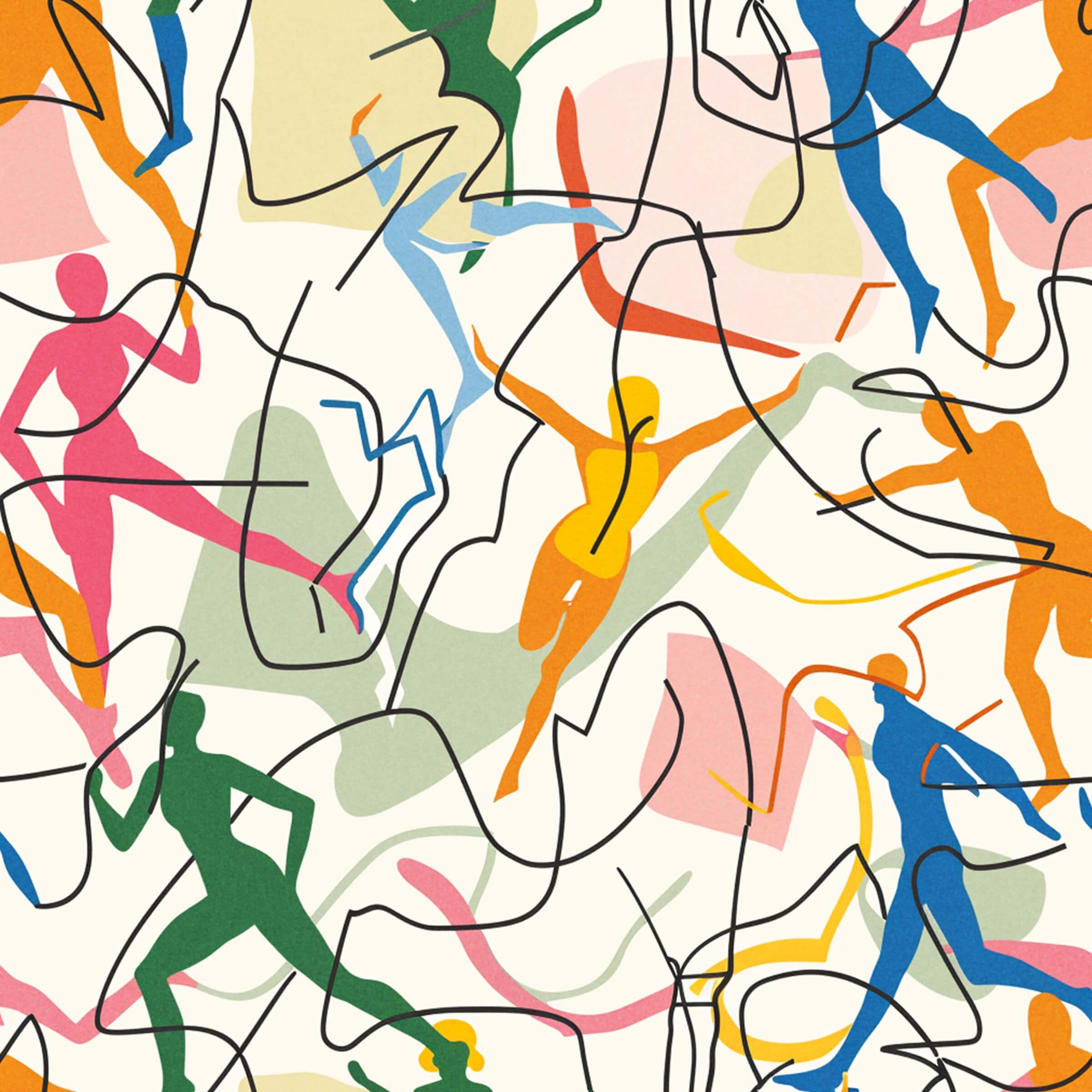
15 Fun Facts About the Olympic Games That'll Make You a Sports Guru
Welcome to the wacky world of Olympic trivia, where sweat meets strange and glory gets a bit goofy. Forget the shiny medals and teary-eyed anthems – we're diving into the quirky underbelly of the Olympic Games. So tighten those laces, sports nerds and history geeks, as we serve up some Olympic fun facts that'll have you spitting out your protein shake and saying, "Wait, that actually happened?"
1. The Olympic Flame Has Gone to Space (Because Why Not?)
In 1996, the Olympic torch boldly went where no flame had gone before – outer space. As part of the Atlanta Games, the torch was carried aboard the U.S. Space Shuttle Atlantis. While it couldn't be lit in the oxygen-free environment (nobody wanted a "Houston, we have a problem" moment), it did complete 96 orbits of Earth before returning to our planet. Talk about taking the Olympic spirit to new heights!
2. Live Pigeon Shooting Was Once an Olympic Sport
In 1900, the Paris Olympics featured a sport that would make modern animal rights activists faint – live pigeon shooting. Competitors took aim at real, living pigeons released from traps. Over 300 birds met their feathery demise. The gold medalist, Leon de Lunden of Belgium, personally dispatched 21 pigeons. Thankfully, this event was a one-hit wonder, never to appear again. Clay pigeons, however, breathed a sigh of relief and took over. You know who else likes knocking pigeons out of the air? Peregrine Falcons!

3. The Olympics Once Lasted 188 Days
If you think two weeks of Olympic fever is intense, imagine nearly half a year! The 1908 London Olympics kicked off on April 27 and didn't wrap up until October 31. That's 188 days of non-stop sporting action. The reason? Poor organization and a dash of British weather. Events were scattered throughout the year, giving a whole new meaning to "Olympic season." Modern organizers, take note: sometimes less is more.
4. Tug-of-War Was a Legit Olympic Sport
From 1900 to 1920, tug-of-war was a bona fide Olympic event. Teams of eight would grab a rope and pull their hearts out for glory. The British police force dominated, winning two golds and a silver. Imagine training your whole life to be the world's best... puller of a rope? While it might seem quaint now, we can't help but think it deserves a comeback. After all, who wouldn't want to see Usain Bolt anchoring the Jamaican tug-of-war team?
5. The Youngest Olympian Was 10 Years Old (Maybe)
In the 1900 Paris Olympics, a young Dutch rower named Geert Fredricks allegedly competed at the tender age of 10. We say "allegedly" because record-keeping wasn't exactly meticulous back then. Some sources dispute his age, but if true, he'd be the youngest known Olympian. Fredricks was the coxswain for the Dutch pairs rowing team, which won bronze. Next time you feel old, remember: you're probably still younger than the oldest Olympian (Oscar Swahn, who won silver at 72 in 1920).
6. The Marathon Distance Was Changed for British Royalty
The modern marathon distance of 26.2 miles (42.195 km) wasn't plucked out of thin air – it was set to please British royalty. In the 1908 London Olympics, the course was extended by 385 yards so the race could start at Windsor Castle and finish in front of the royal box at the Olympic stadium. Runners everywhere have been cursing those extra yards ever since. Thanks a lot, Your Majesty!
7. Olympic Medals Aren't Solid Gold (Sorry to Burst Your Bubble)
If you've ever dreamed of biting into a solid gold Olympic medal, prepare for disappointment. The last time Olympics handed out solid gold medals was in 1912. Modern "gold" medals are actually made of silver, then plated with a minimum of 6 grams of gold. Silver medals are pure silver, while bronze medals are... well, bronze. So next time you see an athlete bite their gold medal, know they're tasting mostly silver with a hint of gilt.
8. An Olympic Champion Once Competed in Both Summer and Winter Games... In the Same Year
In 1924, Christa Luding-Rothenburger of East Germany achieved the impossible – she won medals in both the Winter and Summer Olympics in the same year. She snagged silver in speed skating at the Sarajevo Winter Games, then cycled her way to bronze in the sprint event at the Los Angeles Summer Games. This feat is now impossible to replicate, as the IOC decided to stagger the Winter and Summer Games starting in 1994. Talk about a cool (and hot) accomplishment!
9. The Olympic Rings Colors Were Chosen Because Every Flag Had at Least One of Them
The iconic Olympic rings, designed by Baron Pierre de Coubertin in 1912, aren't just pretty colors. The blue, yellow, black, green, and red rings on a white background were chosen because at least one of these colors appeared on every national flag at the time. It's a clever bit of design meant to represent the union of the five continents and the meeting of athletes from around the world. Who knew global unity could be so colorful?
10. There Was Once an Art Competition in the Olympics
From 1912 to 1948, the Olympics included competitions in five categories of art: architecture, literature, music, painting, and sculpture. All works had to be inspired by sport. While it sounds quirky now, these were legit medal events. In fact, Baron Pierre de Coubertin, the founder of the modern Olympics, won a gold medal for literature in 1912. Sadly, this artistic interlude ended due to concerns about amateurism – apparently, most artists were considered professionals.
11. The First Olympic Mascot Was... Not What You'd Expect
The tradition of Olympic mascots UNOFFICIALLY started in 1968 with an odd creation of a... um... one-legged skiing head? It was called Schuss, and people kind of loved it. This started the OFFICIAL trend of mascots for the 1972 games with Waldi, a colorful dachshund. Why a dachshund? Because it represented the attributes required for athletes: resistance, tenacity, and agility. Plus, it was a popular breed in Bavaria, where the Munich Games were held. Waldi's body was designed with different colored stripes, each representing a different Olympic sport. It's a far cry from the high-tech, CGI mascots we see today, but you've got to start somewhere! Psst, if you want to see these, here's a fun ranked list.

12. The Oldest Olympic Gold Medalist Was 64 Years Old
In 1908, Oscar Swahn of Sweden won his first Olympic gold medal in running deer shooting at the ripe old age of 60. But he wasn't done yet. He went on to win his last gold medal at 64 in the 1912 Stockholm Olympics, making him the oldest gold medalist in Olympic history. Swahn continued competing until he was 72, proving that it's never too late to chase your Olympic dreams. Maybe there's hope for us couch potatoes after all!
13. The Olympic Torch Relay Wasn't Always a Tradition
The Olympic torch relay, now a beloved tradition, actually has a somewhat dark origin. It was first introduced in the 1936 Berlin Olympics, organized by the Nazi regime. The idea was to connect the ancient Greek origins of the Games with the modern era, and of course, to showcase the supposed superiority of the Aryan race. Despite its problematic beginnings, the torch relay has evolved into a symbol of global unity and the Olympic spirit.
14. An Olympian Once Competed Without a Stomach
In 1960, Danish cyclist Knud Enemark Jensen collapsed during the 100 km team time trial. Tragically, he died later that day. The autopsy revealed something shocking – Jensen had no stomach. He had previously undergone surgery to remove it due to cancer. Despite this incredible disadvantage, Jensen had managed to make it to the Olympic level. It's a testament to human determination and the lengths athletes will go to compete at the highest level.
15. The Olympics Gave Us the Most Powerful Podium Pic Ever
The 1968 Mexico City Olympics indeed saw one of the most iconic protests in sports history, but it didn't involve eels. American sprinters Tommie Smith and John Carlos, who won gold and bronze in the 200-meter dash, raised black-gloved fists during the medal ceremony as the U.S. national anthem played. This silent gesture, known as the Black Power salute, was a protest against racial discrimination and injustice. The image of their raised fists became an enduring symbol of the civil rights movement. As a show of solidarity, Australian silver medalist Peter Norman wore an Olympic Project for Human Rights badge. The IOC responded by expelling Smith and Carlos from the Games, but their actions resonated far beyond the stadium, cementing their place in both Olympic and civil rights history.

From space-traveling flames to stomach-less cyclists, the Olympic Games have seen it all. These quirky tidbits remind us that behind the glitz, glamour, and superhuman feats, the Olympics are fundamentally human – full of oddities, surprises, and yes, even space. So next time you're watching the Games, remember: you're not just witnessing sports history, but quite possibly the next installment of weirdness. We think that is pretty neat. BTW, if you are into human oddities, try out our fun facts about being human!





